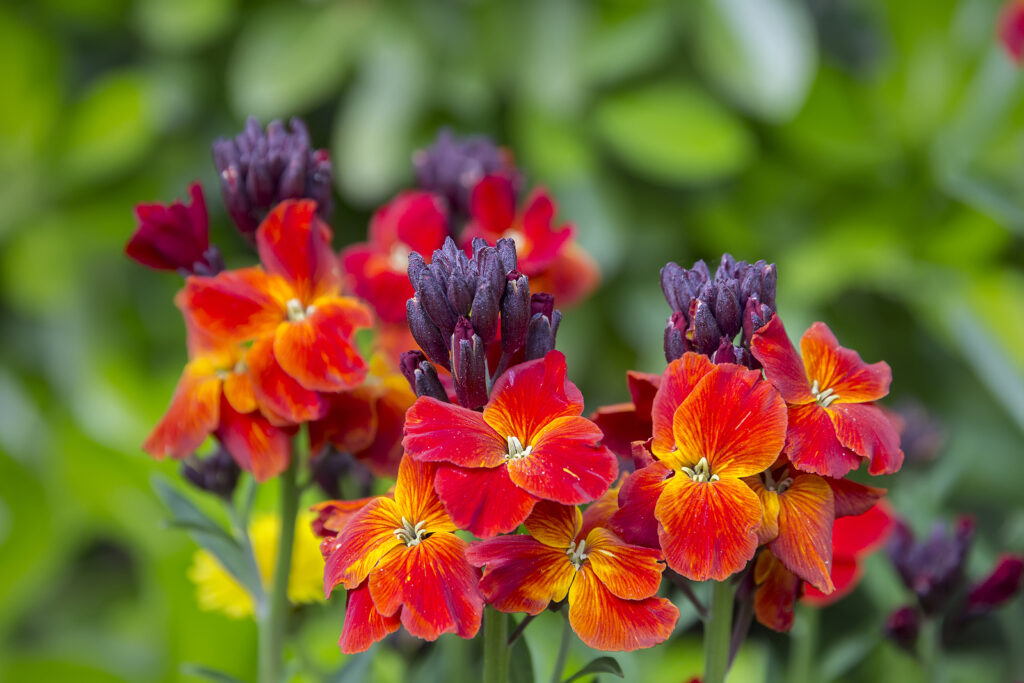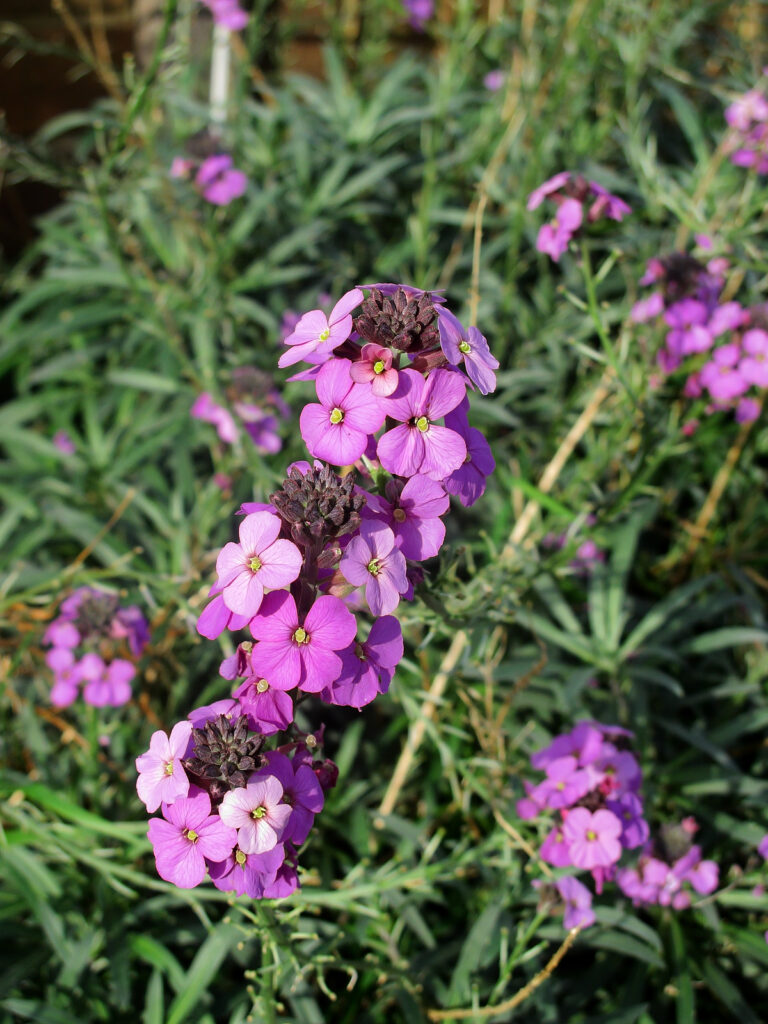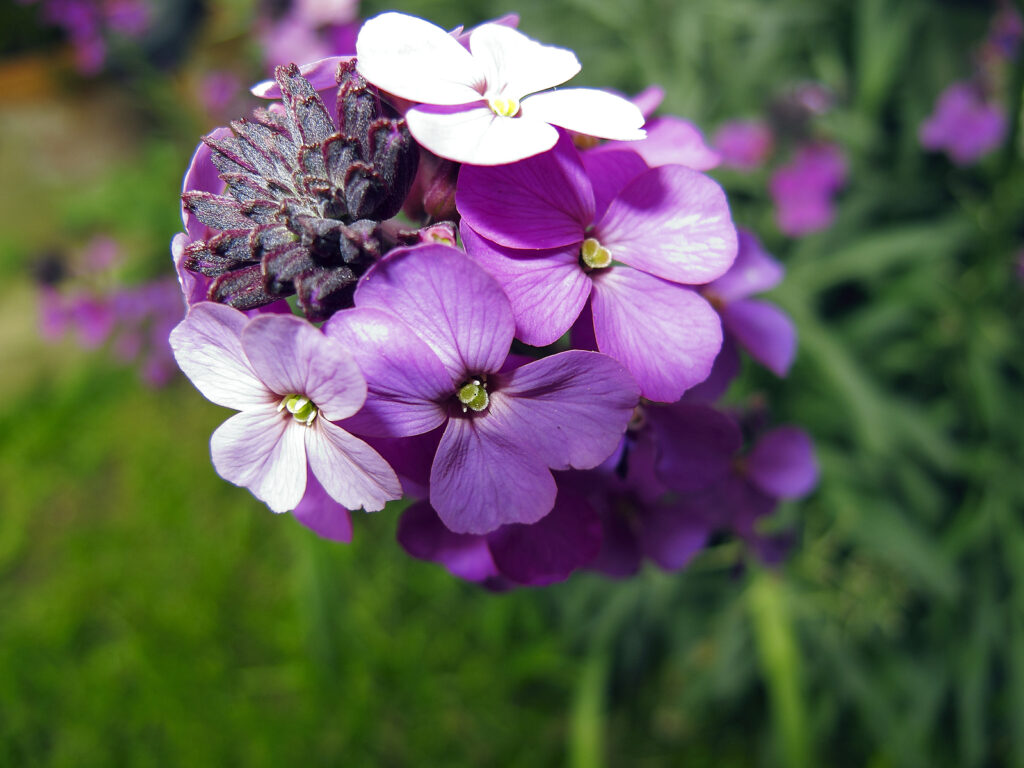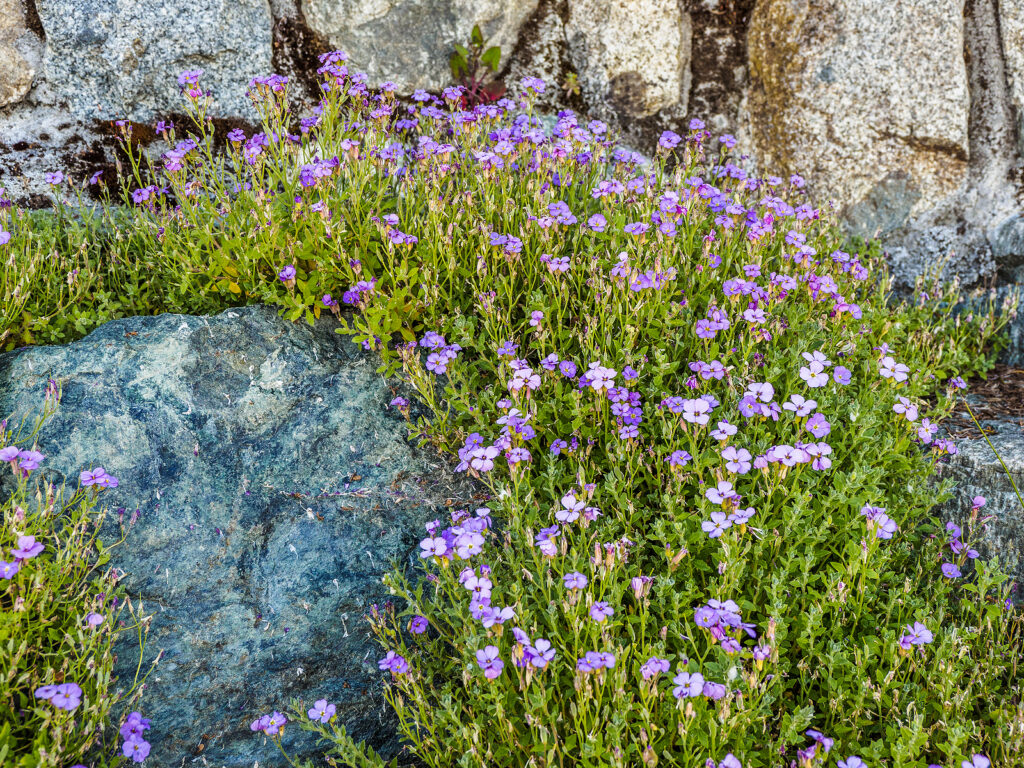Erysimum, commonly called wallflower, is grown for its dense clusters of four-petaled showy flowers that can be lavender, sky blue, yellow, mahogany, red, or orange. Erysimum cheiri, the annual English wallflower, and the perennial cultivar ‘Bowles Mauve’ are the best-known wallflowers.
Erysimum is a genus of about 80 annuals, biennials, and perennials. This genus now includes Cheiranthus, a genus that included the old-fashioned, sweetly fragrant bedding wallflower now known as Erysimum cheiri. Some Erysimum found in garden centers today may still carry the Cheiranthus name.
Wallflowers appear in clusters above bushy plants with narrow, bright green leaves. Wallflowers are a good choice for planting in beds, borders, and rock gardens. They make good cut flowers.
Wallflowers grow best as perennials in cool, humid regions. In warm and hot summer regions they are best grown as spring-blooming annuals.

Get to know Erysimum – Wallflower
- Plant type: Perennial often grown as an annual or biennial
- Growing zones and range: All zones; grown as a perennial in Zones 7 to 10 where summers are not too hot.
- Hardiness: Sensitive to heat; slightly sensitive to frost
- Height and width: 12 to 30 inches (30-76cm) tall and wide
- Foliage: Lance-shaped, toothed, softly hairy leaves 1-5 inches (3-13cm) long
- Flowers: Erect, showy clusters of 4-petaled flowers to 1 inch (2.5cm) across; petals are arranged in a cross.
- Flower colors: Yellow, mahogany, red, and orange
- Bloom time: Spring and early summer
- Uses: Border, foundation planting, rock garden
- Common name: Wallflower
- Botanical name: Erysimum (syn. Cheiranthus)
- Family name: Brassicaceae (Cruciferae)
- Origin: Europe to North Africa
Where to plant Erysimum – Wallflower
- Plant Erysimum in full sun or light shade.
- Grow Erysimum in humus-rich, well-drained soil.
- Erysimum prefers a soil pH of 6 to 7.5.
Erysimum uses
- Plant Eysimum along a foundation or wall.
- Plant in borders or rock garden.
- Plant Erysimum as a companion to spring-blooming bulbs such as tulips.
- Erysimum flowers are sweetly fragrant; plant them near an entry or patio or window.

When to plant Erysimum – Wallflower
- Set Erysimum in the garden in spring after the last frost.
- Sow seed indoors 6 to 8 weeks before the last frost in spring.
- Sow seeds outdoors in late summer where winter temperatures do not drop below 20°F (-6.7°C).
- Set container-grown plants in the garden in early spring as soon as the soil can be worked; harden off plants for several days in the shade before planting out in the garden.
- Where summers are hot, grow Erysimum as a spring-blooming annual and replace it with a heat-tolerant annual in early summer.

Planting and spacing Erysimum – Wallflower
- Space Erysimum 12 to 24 inches (30-61cm) apart depending on the variety.
- Sow seed in pots or flats filled with sterile seed starting medium. Sow seeds ¼ inch deep and keep cool at 60°F (15.6°C) until germination in 5 to 7 days.
- Grow seedlings in bright sunlight or a few inches below fluorescent light.
- Sow seeds outdoors in smoothly prepared and fertilized beds in late summer where winter temperatures do not drop below 20°F (-6.7°C).
- Where winter temperatures drop below 20°F (-6.7°C), sow seeds outdoors in early spring as soon as the soil can be worked or in a cold frame in late summer.
How to water and feed Erysimum – Wallflower
- Water Erysimum frequently; do not allow the soil to dry out.
- Fertilize Erysimum at planting time; fertilize perennials each spring as plants begin to grow.

Erysimum – Wallflower care
- Thin outdoor-grown seedlings to their permanent spacing when they are 6 inches (15cm) tall.
- Mulch around growing plants with aged compost or chopped leaves to conserve soil moisture.
- Protect Erysimum in winter by placing evergreen boughs or chopped leaves over the top of perennials that have died back.
Erysimum – Wallflower pests and diseases
- Erysimum can be attached by aphids which can be controlled with insecticidal soap.
- Club roots is a disease that can be avoided by not planting Erysimum in the same place two years in a row and raising the soil pH to 7.5.
Erysimum – Wallflower propagation
- Erysimum is propagated by seed. See above for details.
- Seeds germinate in 5 to 21 days at 54°F (12°C). Blooms appear about 5 months after sowing.
- Set out transplants in very early spring for spring bloom.
- For late summer bloom, sow seeds outdoors in early spring.
- In mild-winter areas, sow seeds outdoors in fall.

Erysimum – Wallflower varieties to grow
- Erysimum ‘Bowles Mauve’. Perennial; massed erect stems with narrow gray-green leaves; grows 3 to 6 feet (.0-1.8m) tall; stems are topped by 18-inch (45cm) long, narrow, spikelike clusters of mauve flowers; best where summer are cool and winters are mild; may be short-lived.
- E. cheire (formerly Cheiranthus cheiri), English wallflower. Perennial often grown as a biennial or annual; best suited for cool, moist regions; grow to 24 inches (61cm) tall with narrow bright green leaves; a broad cluster of showy sweet-scented blooms; flower colors include yellow, cream, orange, red, brown, or burgundy, sometimes shaded with contrasting colors.
- E. hieraciifolium (E. alpinum) (sometimes labeled Cheiranthus allionii), Siberian wallflower. Biennial or perennial often treated as an annual; narrow-leafed plant to 18 inches (45cm) tall; fragrant, rich orange flowers in spring; cultivar ‘Moonlight’ has bright yellow flowers that open from red buds.
- E. kotschyanum. Perennial often treated as an annual in warm climates; light green leaves in mats to 6 inches (15cm) tall; scented, deep yellow flowers on 2-inch (5cm) stems bloom in spring; a good choice for rock gardens.















